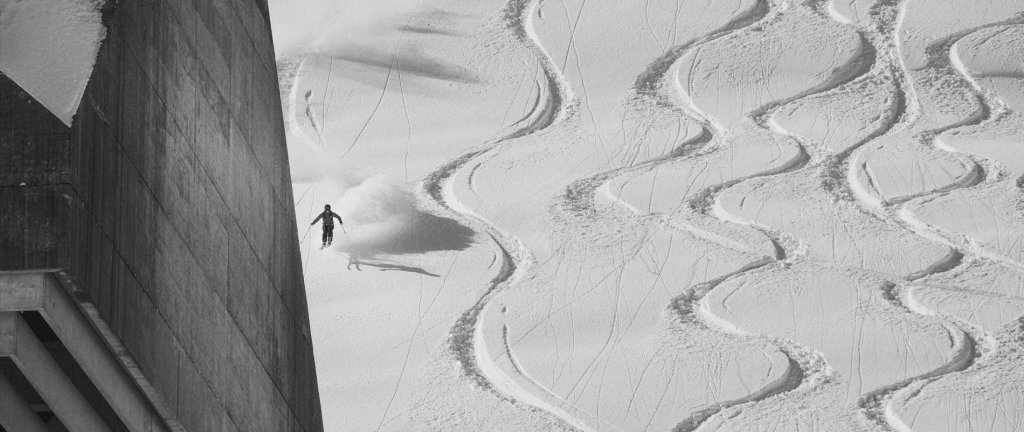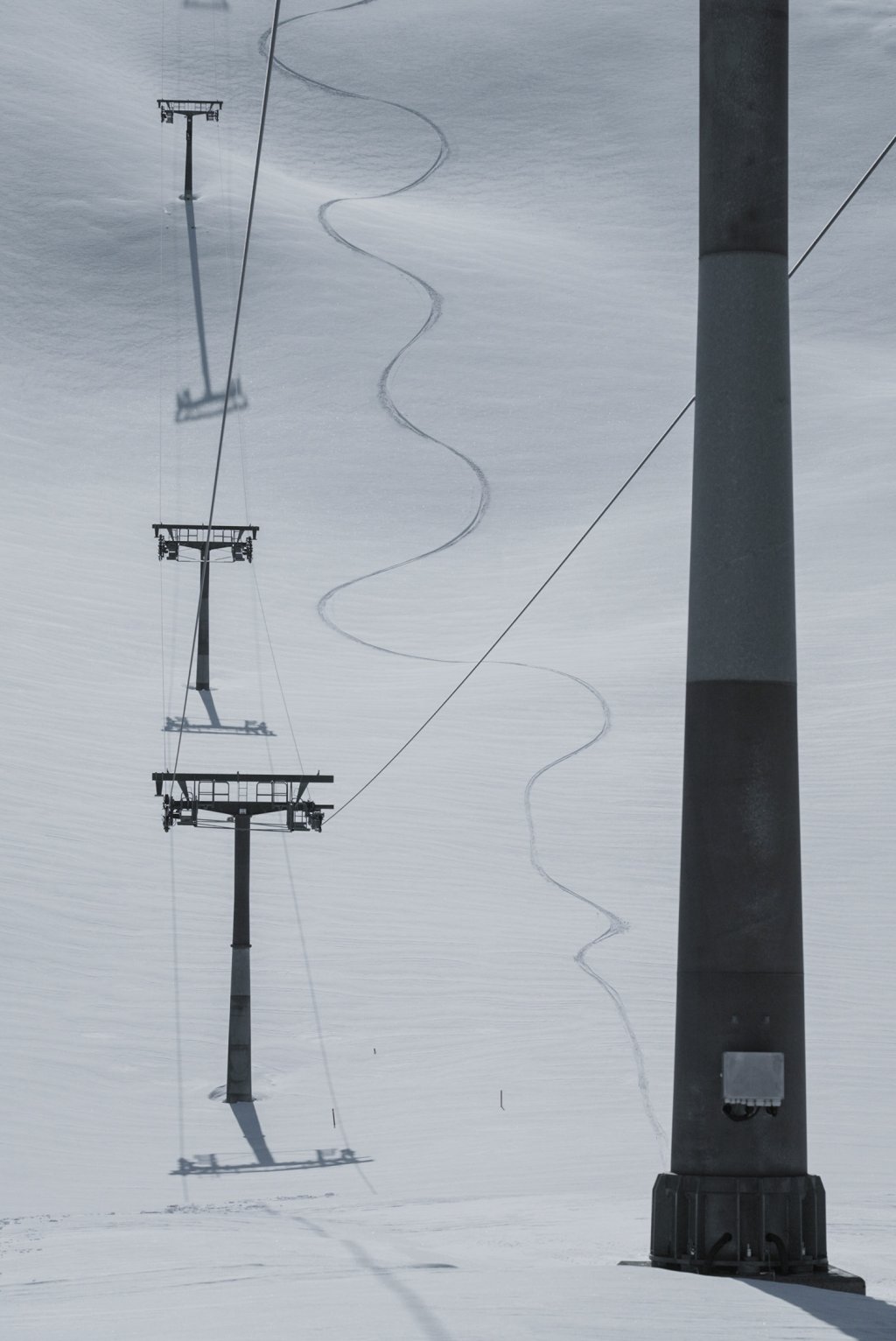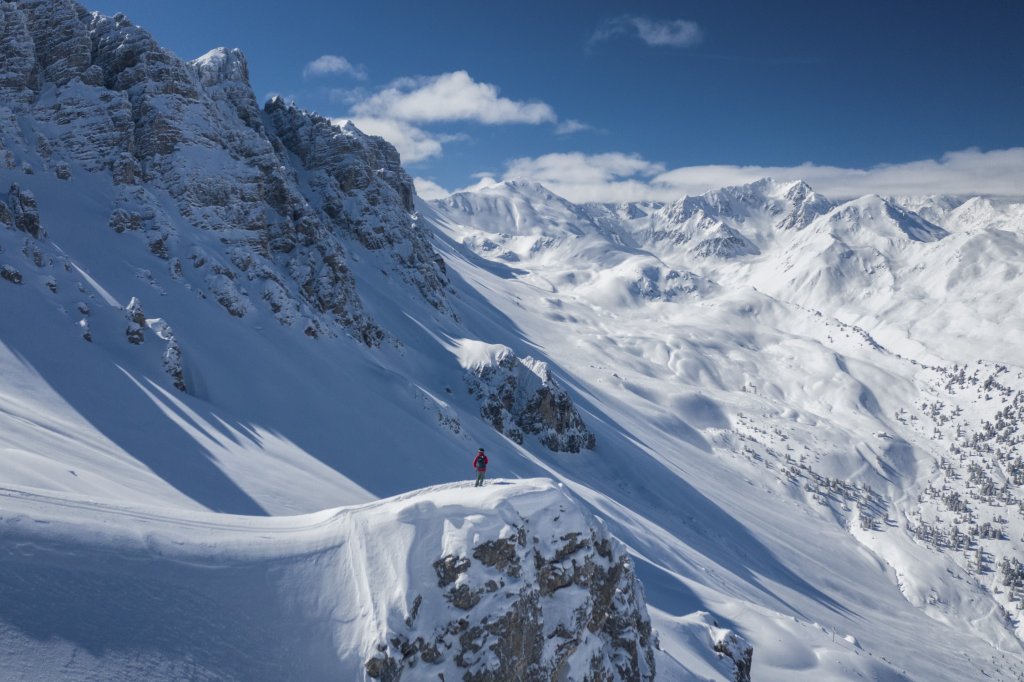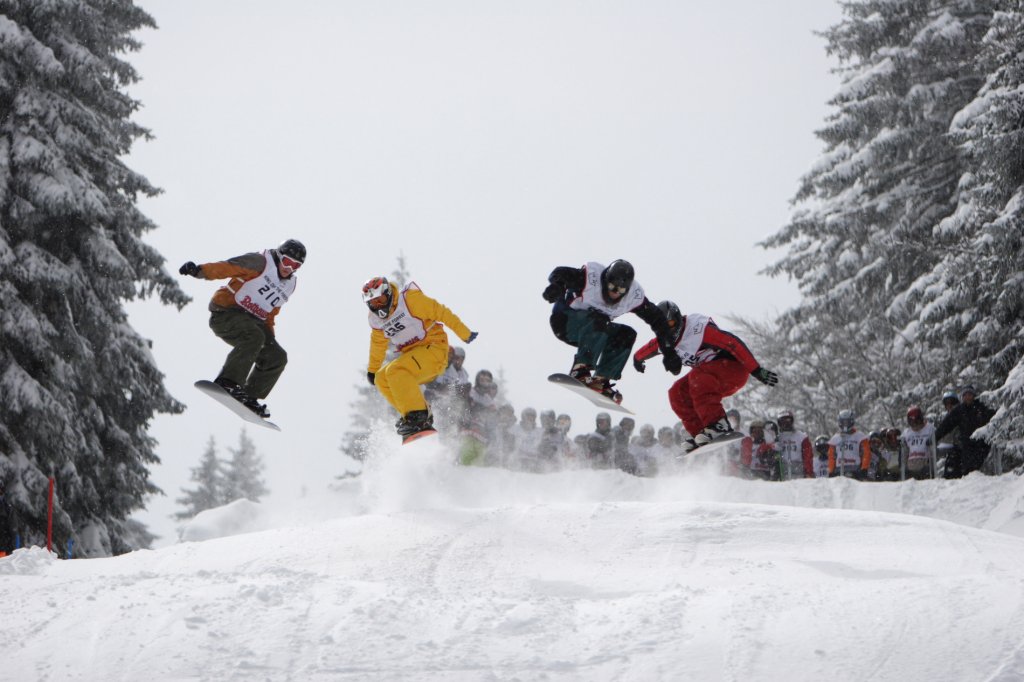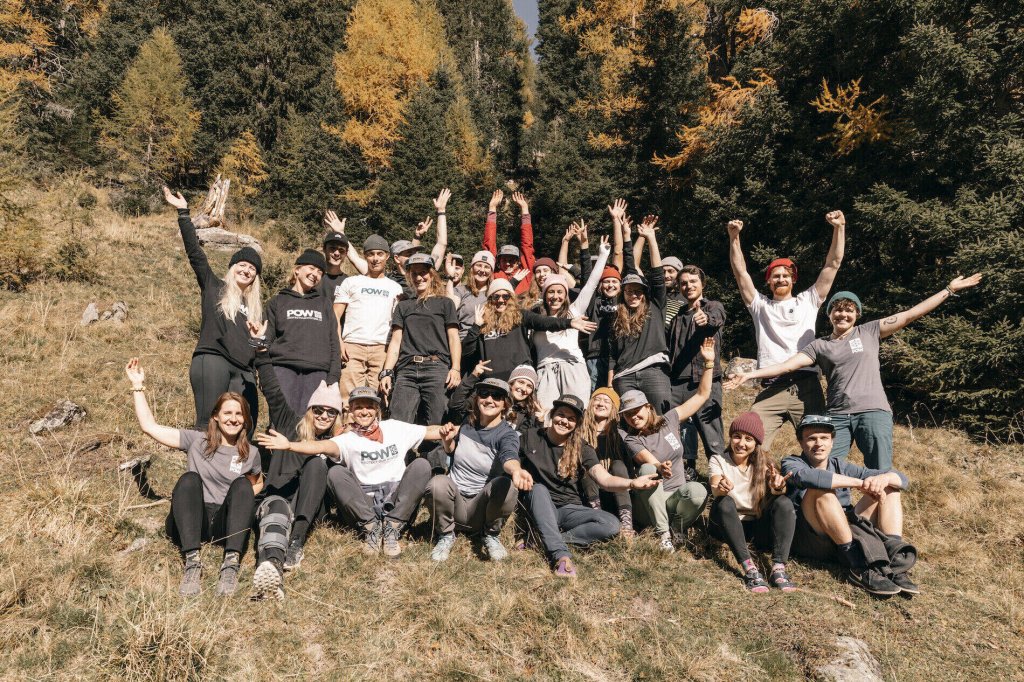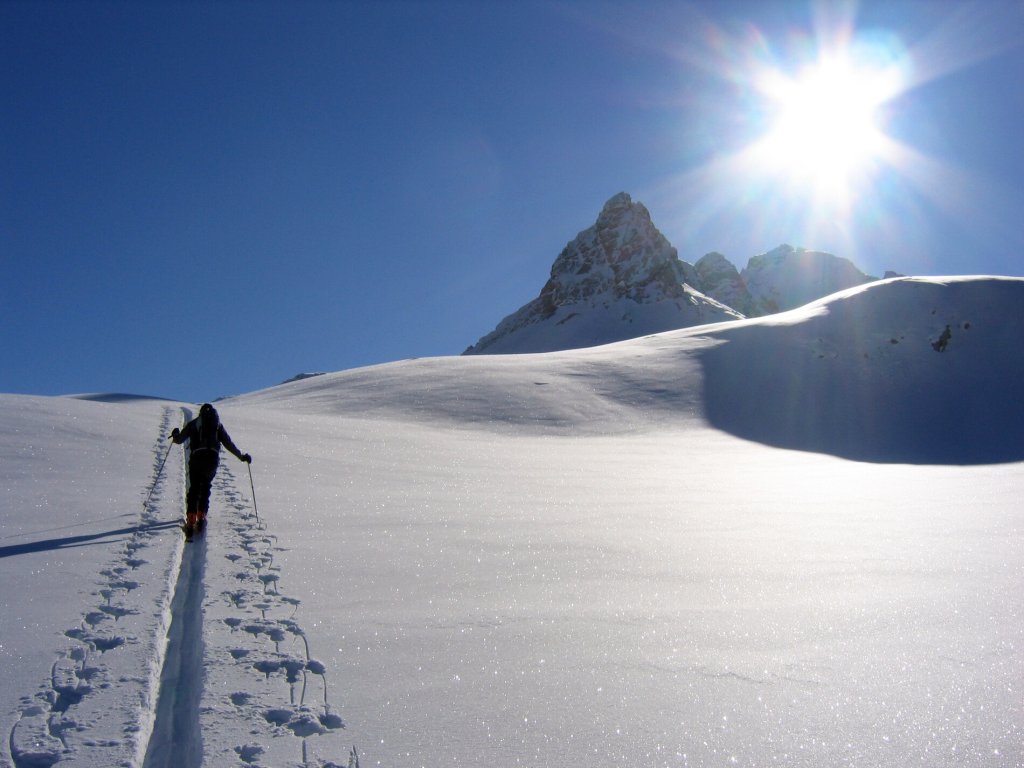Vanishing Lines
Happily, this attitude is changing. More and more is no longer important for many skiers and snowboarders. What is important is to protect the last remaining natural areas of the Alps and high mountain landscapes. This is also what Mitch Tölderer and Lena Stoffel want to show in their documentary Vanishing Lines.
While Struktur still shows the real landscape without judgment, Vanishing Lines turns the narrative around. The 20-minute documentary focuses on the expansion between the Pitztal and Ötztal glaciers. You probably all remember what it's all about: the so-called glacier marriage. The area around the Linker Fernerkogel is to be made accessible with three gondolas and a joint cable car center below the Braunschweiger Hütte. There would be 64 hectares of pistes on Karles-, Hangenden- and Mittelbergferner, including a reservoir and snowmaking facilities. Of this, 95 percent of the piste area would be on glaciers. The largest glacier ski area in the world is to be created as a result.
Jakob Falkner, Managing Director of Bergbahnen Sölden, tries to explain the project as follows: "I hope that we can build our project. Because it is a wonderful offer that customers are looking for. There have been studies with our customers for 15 years and there are always three things that stand out: Size of the ski resort, snow reliability and slopes."
But aren't there already enough slopes and ski resorts?
However, Lena Stoffel and Mitch Tölderer share this opinion and are therefore calling in Vanishing Lines together with the Austrian Alpine Association and other NGOs to speak out against the project and the further expansion of ski resorts. "Once destroyed, the unspoiled Alpine region will be lost forever: lost for nature, for us and for future generations. As part of the backcountry snow community, as a father and as a committed citizen, I will use my voice to campaign against the further expansion of ski resorts and for the preservation of our last natural mountain landscapes," explains Tölderer in the film.
The two are supported by Benjamin Stern, Department of Spatial Planning and Nature Conservation at the ÖAV, and Birgit Sattler, Professor at the Institute of Ecology at the University of Innsbruck, as well as Dr. Gerd Estermann from the Feldring citizens' initiative: "The film uses impressive images to show the contrast between natural wilderness and a high alpine landscape dominated by technical structures. The more our everyday life is organized and mechanized, the more our experiences are determined by virtual impressions, the stronger the longing for pristine nature grows. Our citizens' initiative is fighting to preserve it - also for future generations."
Here is the film in full length:
Realism becomes activism
Luckily, the glacier marriage project is currently on hold due to the pandemic. However, this does not mean that the project is off the table. Both films show us that it is important to first become aware of our reality in the ski resorts and then to stand up for it so that something fundamental can change in the prevailing status quo. We hope the two films can provide the necessary impetus.
